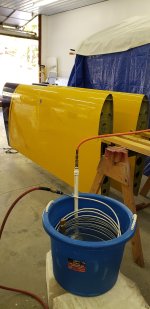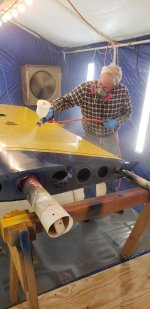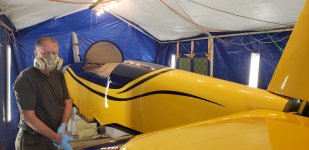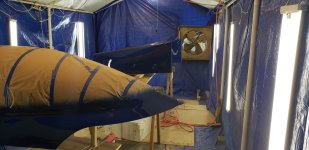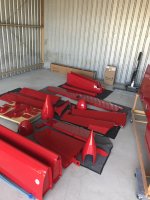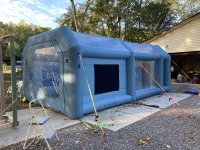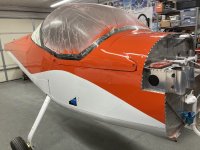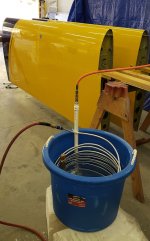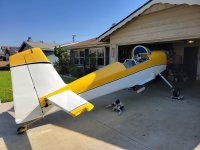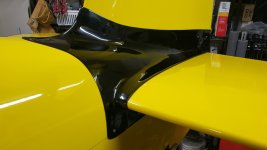gmcjetpilot
Well Known Member
I have researched it and 100% going to paint my plane DIY. That is done deal, design, prep, prime, paint materials, equip, most of the technique**..... The question is who has painted BEFORE they flew fully or partially disassemble (before wings going on).
I have been around aircraft paint shops and watched videos over the years. Obviously when painting a plane all flight controls come off, cowls, fairings... etc. get painted separately. That is no different and always done. Far more common to paint assembled in the re-paint industry and I new aircraft manufactures.... So I am leaning towards prime and paint after flying. PS...
Priming whole outside or plane before assembly and flying. I decided against that except for fiberglass cowl and fairings. Why? You need fresh clean primer to paint onto. I would rather start with bare aluminum, prep (etch alodine), prime, top coat process all in one span of time. YES you can scuff up primer, shoot sealer on it, than paint. I don't see too many fully primed RV"s. It is naked or painted typically. What did you do?
SO WHAT sequence did you use to paint, exterior top coat your plane?
PS Last RV I built I had Pro painted because I did not have time or space, and a good paint shop was on the field. I recall I paid $6K back then (mid 1990's). They quoted $4K but jacked up the price, ended up $6k. I had about $38K into the plane, and yes I flew it naked for a long time. It has one advantage. After flying for a year or more, I changed the cowl induction scoop and airbox, changed gear leg fairings and wheel pants. If I had painted the whole plane right away, it would require re-painting. The $6K at the time felt like too much but the results were excellent. A paint job like that today as I understand it would be $18K to $20K? If it was still $6K I'd pay to have it done. On the other hand I hear horror stories of "pro paint" going really bad. I will DIY this paint because I want to learn (re-learn) and not going to pay $20K for paint. I estimate all materials will be $2k to $3k (I already have good compressor, spray guns). That extra extra money savings is going to be for fuel.
** (Painting bottom or wings, horz stab, bottom fuselage is a bit of a challenge TIPS welcomed, equip and technique ?)
I have been around aircraft paint shops and watched videos over the years. Obviously when painting a plane all flight controls come off, cowls, fairings... etc. get painted separately. That is no different and always done. Far more common to paint assembled in the re-paint industry and I new aircraft manufactures.... So I am leaning towards prime and paint after flying. PS...
Priming whole outside or plane before assembly and flying. I decided against that except for fiberglass cowl and fairings. Why? You need fresh clean primer to paint onto. I would rather start with bare aluminum, prep (etch alodine), prime, top coat process all in one span of time. YES you can scuff up primer, shoot sealer on it, than paint. I don't see too many fully primed RV"s. It is naked or painted typically. What did you do?
SO WHAT sequence did you use to paint, exterior top coat your plane?
PS Last RV I built I had Pro painted because I did not have time or space, and a good paint shop was on the field. I recall I paid $6K back then (mid 1990's). They quoted $4K but jacked up the price, ended up $6k. I had about $38K into the plane, and yes I flew it naked for a long time. It has one advantage. After flying for a year or more, I changed the cowl induction scoop and airbox, changed gear leg fairings and wheel pants. If I had painted the whole plane right away, it would require re-painting. The $6K at the time felt like too much but the results were excellent. A paint job like that today as I understand it would be $18K to $20K? If it was still $6K I'd pay to have it done. On the other hand I hear horror stories of "pro paint" going really bad. I will DIY this paint because I want to learn (re-learn) and not going to pay $20K for paint. I estimate all materials will be $2k to $3k (I already have good compressor, spray guns). That extra extra money savings is going to be for fuel.
Last edited:



